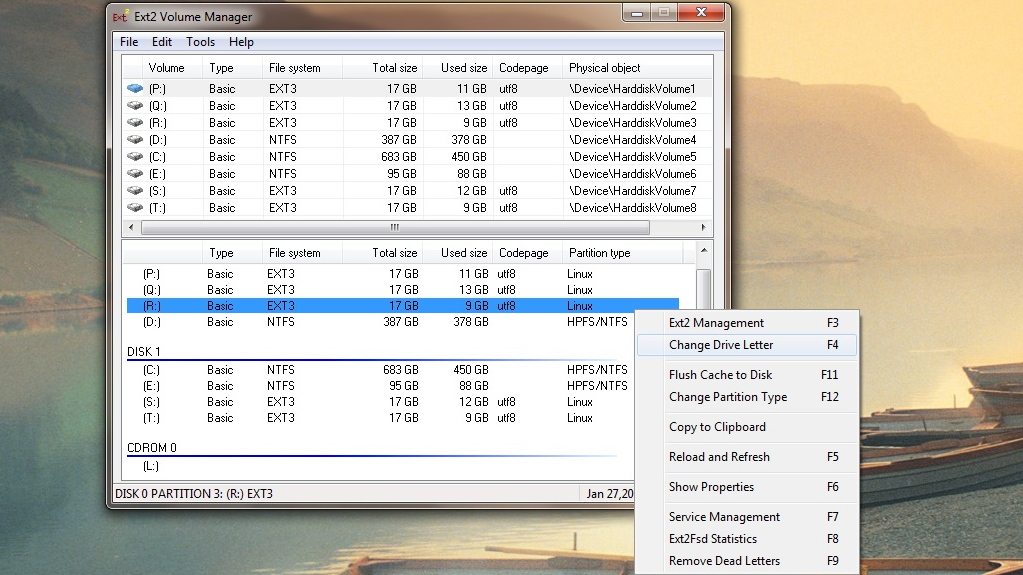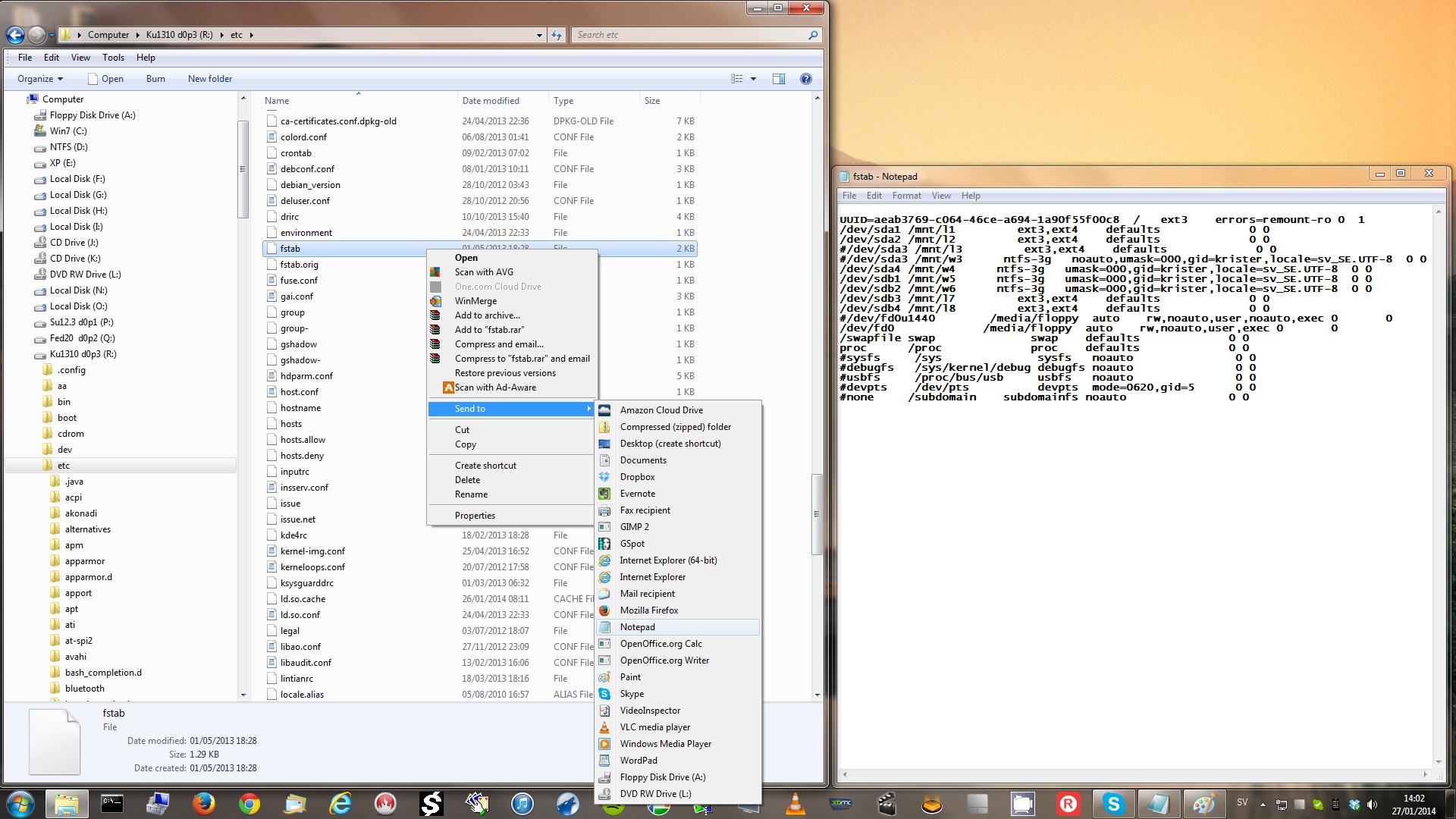| YouTube Videos |
| FILTERS: |
| ALL |
| Dual Boot MultiBoot |
| Android |
| Android-x86 |
| Backup Cloning |
| Chromecast |
| Linux |
| Messaging IM SMS |
| Misc. Soc Media |
| Music Jazz MPB |
| Remote Controls |
| Screen Recording |
| Smart-TV IPTV |
| USB Flash Drives |
| Windows |
 |
Krister's Blog krister at hallergard dot com | Last Updated: 2014-02-01 |
When dual-booting or multi-booting Windows and Linux you are likely to want to access Windows in Linux and vice versa. Accessing Windows in Linux is easy - see the bottom right picture! But accessing Linux in Windows requires 3rd party drivers. I use Ext2Fsd.exe
.
 View Video 4½ min
View Video 4½ min
|
When installing I choose the options to automatically start Ext2Fsd when booting, and to enable forced writing support on
Ext3 partitions (all my Linux partitions have Ext3 file system).
The Ext2 Volume Manager allows you to set or change the drive letters, and you can also use it to assign drive letters to optical drives, USB sticks and other removable drives. I find this tool easier to use than Disk Management under Computer Management in Windows 7. Ext2fsd works equally well with ext2, ext3 and ext4 file systems. |

Ext2 Volume Mgr Click for mount settings! |

Mounting R:/etc/fstab Click for bigger picture! |
The screenshot to the left shows these Linux partitions:
Addendum
|